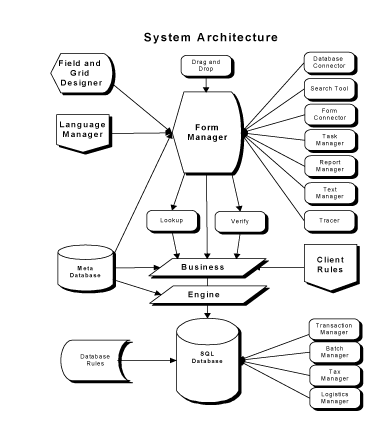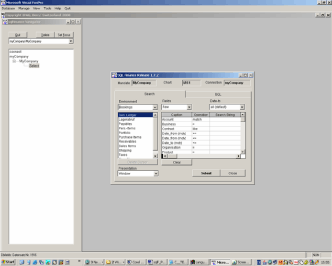System Architecture
The modular architecture of sqlFinance makes the product attractive for users as well as for developpers. All tables are presented through the form manager. longines replica watches The user can choose between a grid listing the current selection or a collection of fields for the current record. Master/detail relations are easy to understand and triggered through the use of master/detail keys or double clicks on fields to lookup master references.

The form manager is database driven. Classes and methods access a meta database defining data structures, data relationships and rules. The meta databases includes information about referential integrity, lookups and double click effects. Modifications in these rules can be effected without any programming necessary.
The search tool is used to specify the search values for a query. Queries can be stored and reused in the search tool. Search values can reference any fields, and the ordering of the selection can be specified additionally.

Database access is executed through the “engine” COM object. The engine will assure the integrity of the active user environment, considering the current mandate and chart of accounts. The use of the engine enables the user to work simultaneously in more than one mandate or database and transfer data from one mandate or database to another.
A toolbar manages the windows opened. This facilitates window access when many windows are opened. Another tool allows to store a reference to any single record selected, with the possibility to add personal notes in a text field. These “notes” may be classified according to a priority and retrieved in later sessions. Drag and drop is used widely in the application. It is possible to drag records to the toolbar, or establish connections between records through drag and drop (ex. Connect a master and detail product entry in a bill of material). Drag and drop can also be used to connect payments to bills, with more than two records possible and test if the total clears to zero. Dragging records of one window over another similar window will create new entries with copy of the source records in the target window.
A replication system handles the transfer of update operations from one database to another database.breitling replica Separate installations can receive user updates that can be exchanged through replication or transferred from remote workstations to servers.
The middle tier provides a number of services:
- Database integrity
- Transaction management
- Closing of batches and periods
- Accounting requirements
- Tax management
- Inventory support
- Customer relationship measurement
- Log tracking
The middle tier is structured in three layers:
- Engine: control of database acces
- Business: control of application rules
- Form: control of data representation in windows
The business tier may be implemented in two versions:
- COM server:
The COM server will be used in the standalone PC version, when there are no stored
procedures available. The COM server is easy to program and company specific
features can be implemented without modification of the other application elements.
- SQL Server stored procedures:
The stored procedures assure data and method integrity for all users. The business
services of the stored procedures go further than the COM server. They include
inventory control, shipping and picking, and customer relationship measurement.